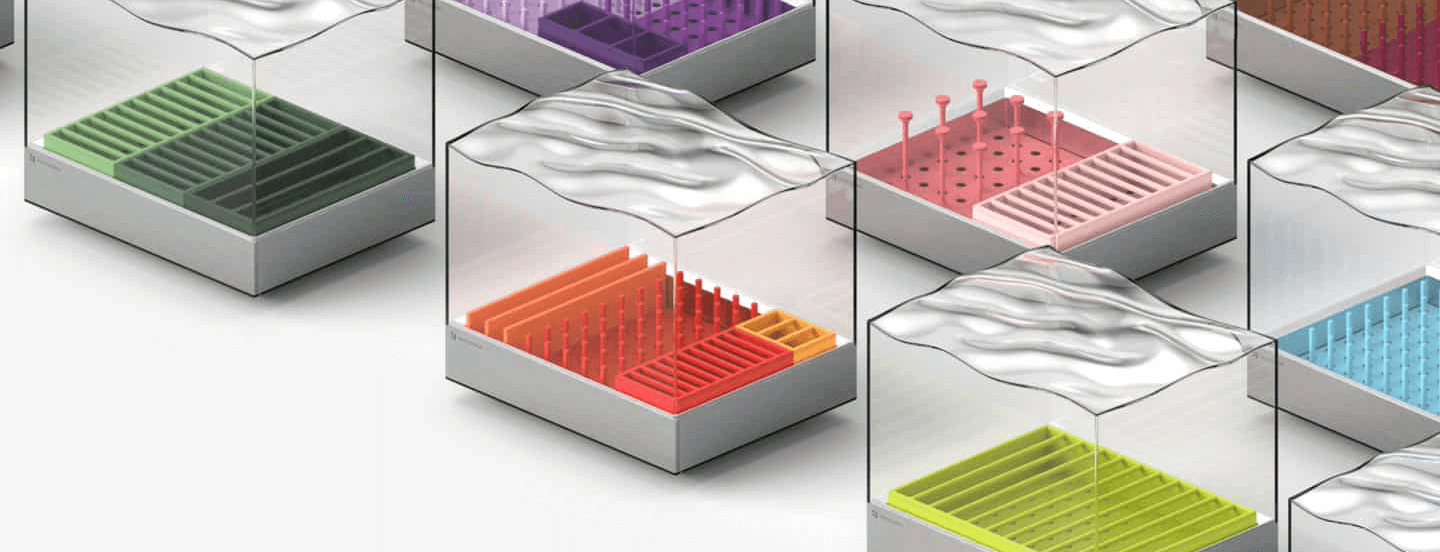
Tetra Dishwasher Heats Up CES
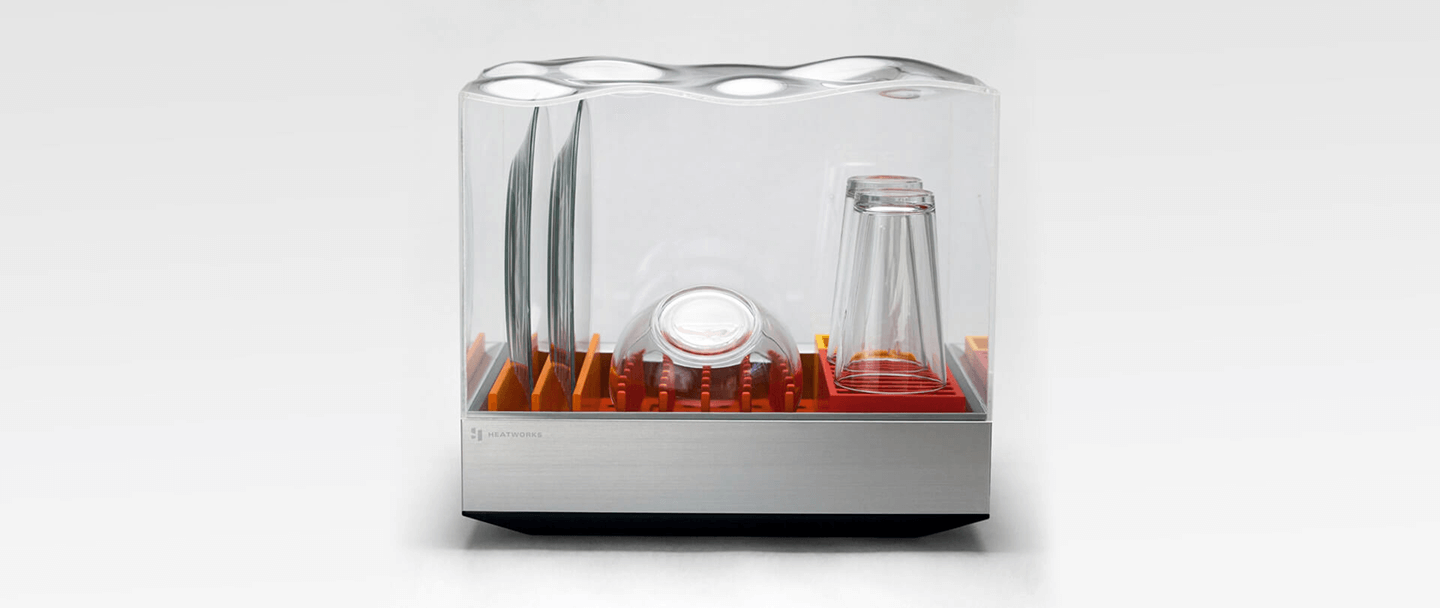
It’s well known that teams at frog like to show their commitment (and have a little fun) by going above and beyond our original brief. We recently decided to take this tradition to new heights and explore entirely new applications of Heatworks‘ groundbreaking Ohmic Array Technology. Jerry Callahan, the company’s founder and CEO, had just finished working with our San Francisco studio on the strategy and design of his Model 3 tankless residential hot water heater, and was still following up on its successful launch when we reached out to get his go-ahead.
Interpreting Technology
Though those of us in the Brooklyn studio weren’t involved in the initial work with Jerry and his team, we were very familiar with Heatworks’ technology from frequent conversations with our San Francisco colleagues – and we couldn’t get it out of our heads or off our drawing boards. We were brimming with ideas on how we could use our human-centered approach to transform products – or potentially create entirely new product categories – with the power of Heatworks.
We classify this type of work as “Technology Interpretation” – rather than seeing new technologies as enabling incremental improvements to familiar paradigms, we leverage them to deliver completely new value propositions and experiences for businesses and end users.
For decades, major appliances like dishwashers, ovens and refrigerators have remained essentially the same, large and cumbersome, dictating user habits rather than adapting to human insights. By reorienting these appliances to meet user’s day-to-day needs, we felt we might be able to affect dramatic changes – helping people conserve water, save time and perhaps even cook and eat together more often.
To narrow our focus, we decided to first apply ourselves to a problem that many of us frogs experience living in compact homes in urban areas. We call it, ‘The Dishwasher Conundrum.’ All too often, people who don’t have dishwashers want them, yet those that do have them don’t use them. We set out to understand why these gaps exist, and how we might meaningfully fill them.
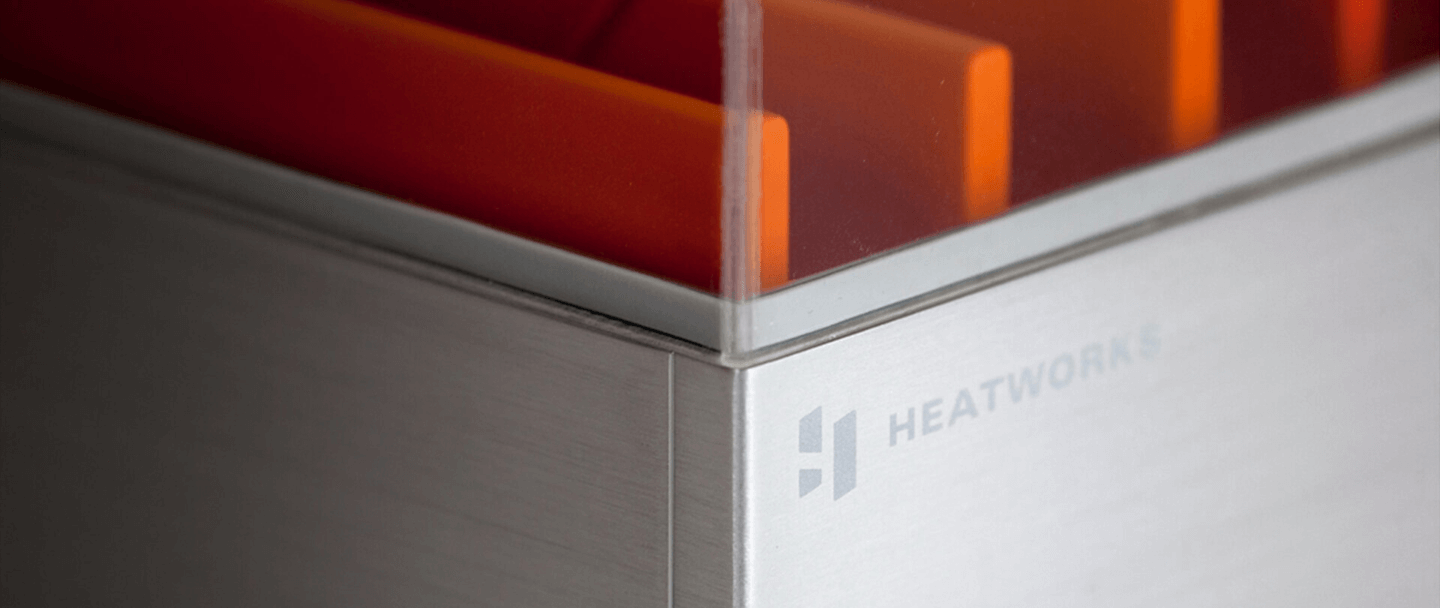
The Problem
The majority of dishwashers available on the market are not designed for how we actually live. They are too big, take too long to run and are too hard to gauge in terms of water and energy consumption. They are literally a closed box, with mysterious inner workings. Even the most well-intentioned users are uncertain how to use them most effectively, let alone how to load it properly (a source of innumerable domestic “discussions”). To truly understand how people are (and aren’t) interacting with this centerpiece of the kitchen layout, we set about conducting some basic design research.
The Findings
Central to our observations was the fact that most young people living in urban areas don’t have a dishwasher because they either don’t have room for one, or they live in an apartment where the appliance isn’t permitted. And the fortunate few that do have a dishwasher rarely use them because they are too big for a small household to fill and too slow to run. Many simply wash dishes by hand.
We also found that older demographics tend to stop using their dishwashers as well. In addition to not using enough dishes to fill the machine, they find leaning down to load and unload a dishwasher inconvenient or uncomfortable – again leading to hand washing.
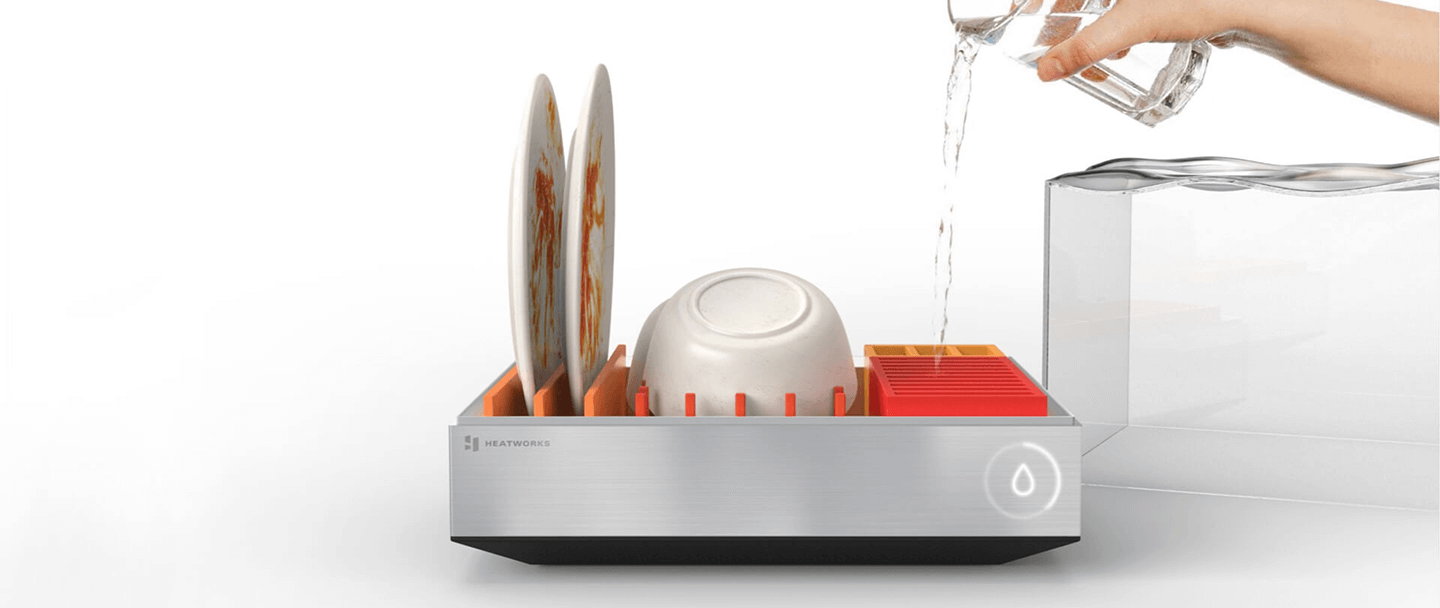
In our secondary research around water consumption, we were surprised to find that hand washing is actually much less efficient than most people think. When used correctly, dishwashers are 10 times more efficient because they don’t rely on a steady stream of water.
While an average dishwasher uses roughly 28 oz of water per place setting, the average person uses 290 oz to wash the same place setting by hand.
Further exacerbating the problem, the average US household has only 2.5 people, meaning most people don’t use enough dishes to fill a standard machine, which can hold 13 place settings or more. We found that even users that are interested and invested in efficiency and conservation were unclear on how to use dishwashers effectively.
Our research surfaced many important opportunities and constraints for the work that followed, as well as two clear design principles that would guide our project: efficiency and transparency.
Ideation & Concepting
It didn’t take us long to realize that the most direct path to a faster and more energy efficient machine that would meet our urban users’ needs would be to make it dramatically smaller. The engineering team at Heatworks confirmed that their incredibly compact and efficient Ohmic Array Technology would support a smaller size and faster cycles. As we developed our concepts, we found that by intersecting our new use case with this water heating technology, we were able to make a revolutionary shift in scale, increasing efficiency and freeing the dishwasher from the constraints of water lines and kitchen cabinetry.
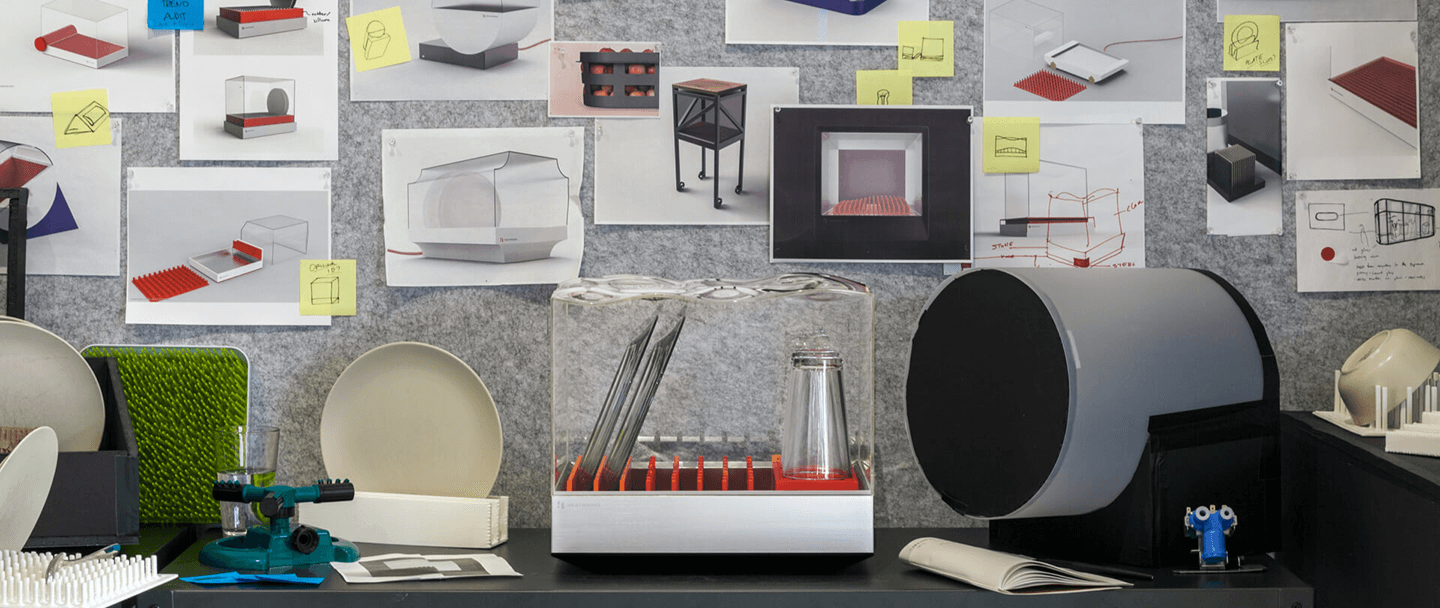
With a counter-top machine in mind, we began sketching and prototyping product architectures and designs that would be attractive to multiple user types, and embody the Heatworks brand principles recently developed by our San Francisco colleagues.
As we progressed, we refined the dishwasher to be a sleek object that would be attractive for multiple uses in a typical urban household. Signature design elements emerged, including simplified loading (no tracks, doors, or confusing spaces for specific dishes), interchangeable trays to allow for alternate uses, a transparent top for visibility and to reduce the visual bulk, and a striking color palette to bring Heatworks’ branding to this new use.
CES and Beyond
Intersecting leading-edge technology and human-centered design enabled us to envision a new species of dishwasher. No longer restricted to home-owners or those with large kitchens, this new generation of dishwasher can appropriately serve those of us living more minimally, in dense urban centers. And it can serve us in ways not typical of for yesterday’s dishwashers, spanning from washing fine crystal, to sanitizing baby bottles, to cleaning fruit.
This is the power of taking a lean Venture Design approach to growth strategy: Heatworks partnered with frog on the commercialization of a new generation of hot water heater, and with that partnership and technology we are able to envision new applications and demonstrate even greater value in the startup and its intellectual property. By observing and listening closely to people and their stories, we are able to illuminate a path to incremental growth of the dishwasher market while enhancing user habits, improving efficiency and reducing consumption.
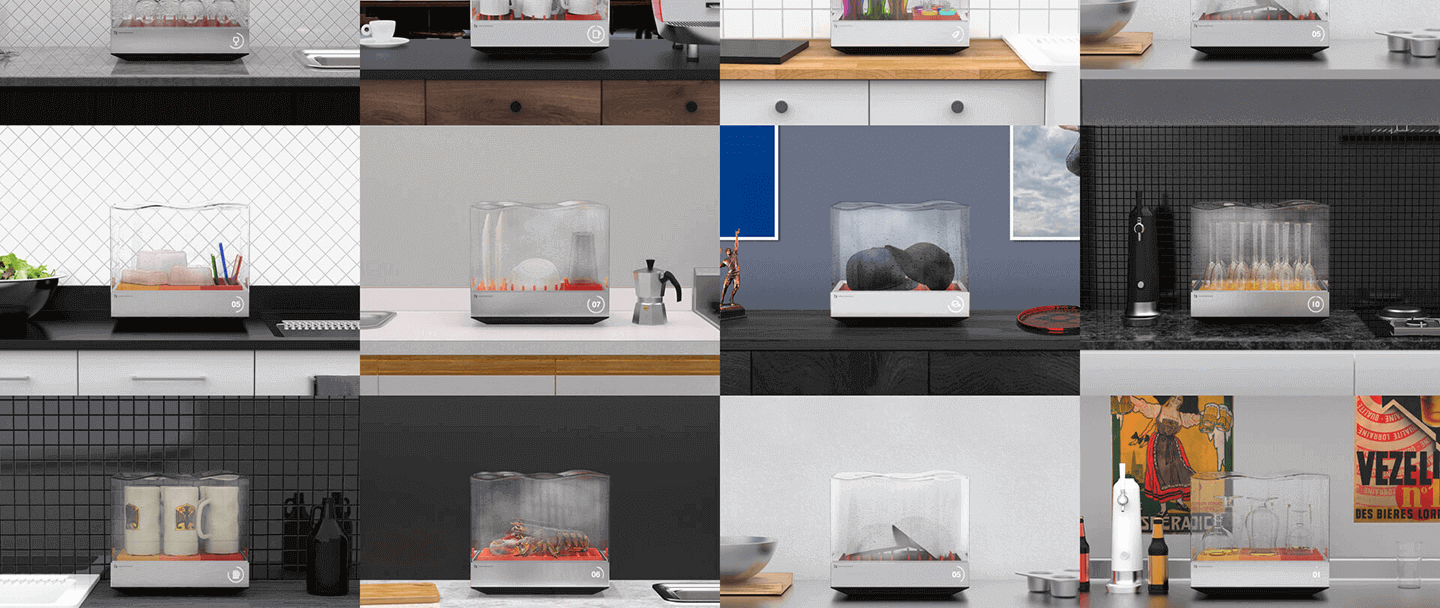
Unveiling the design at CES alongside the Heatworks team, we watched prospective consumers and potential partners engage with our prototype in ways that were surprising and delightful. Though we had originally tailored the concept to a young, urban market, we soon realized that there is in fact a much larger audience drawn to this new appliance paradigm. From here, there’s only one direction to go – forward into refinement and commercialization.
Tetra Design Team
Francois Nguyen, Creative Director
Inna Lobel, Senior Product Architect
Adam Wrigley, Senior Mechanical Engineer
JungSoo Park, Industrial Designer II
Chris Crowley, Industrial Designer
Alex Calkins, Freelance M.E.

frog, part of Capgemini Invent is a global design and innovation firm. We transform businesses at scale by creating systems of brand, product and service that deliver a distinctly better experience. We strive to touch hearts and move markets. Our passion is to transform ideas into realities. We partner with clients to anticipate the future, evolve organizations and advance the human experience.
We respect your privacy
We use Cookies to improve your experience on our website. They help us to improve site performance, present you relevant advertising and enable you to share content in social media. You may accept all Cookies, or choose to manage them individually. You can change your settings at any time by clicking Cookie Settings available in the footer of every page. For more information related to the Cookies, please visit our Cookie Policy.